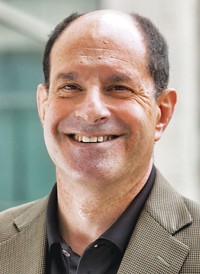Advertisement
Grab your lab coat. Let's get started
Welcome!
Welcome!
Create an account below to get 6 C&EN articles per month, receive newsletters and more - all free.
It seems this is your first time logging in online. Please enter the following information to continue.
As an ACS member you automatically get access to this site. All we need is few more details to create your reading experience.
Not you? Sign in with a different account.
Not you? Sign in with a different account.
ERROR 1
ERROR 1
ERROR 2
ERROR 2
ERROR 2
ERROR 2
ERROR 2
Password and Confirm password must match.
If you have an ACS member number, please enter it here so we can link this account to your membership. (optional)
ERROR 2
ACS values your privacy. By submitting your information, you are gaining access to C&EN and subscribing to our weekly newsletter. We use the information you provide to make your reading experience better, and we will never sell your data to third party members.
Water
Transforming lives
by Bibiana Campos Seijo
April 23, 2018
| A version of this story appeared in
Volume 96, Issue 17
One of the benefits of living in Washington, D.C., is that there is always something going on. Given the concentration of science-related news organizations, societies, and funding bodies that are located in the area, you can guarantee that on any given night of the week there is an event worth attending. In recent weeks I’ve attended a couple that are worth some commentary.
The first one was an event organized by chemical giant Procter & Gamble to commemorate World Water Day and raise awareness of the global water crisis. P&G worked with National Geographic to produce a documentary titled “The Power of Clean Water” that was designed to highlight the impact the company is having in remote parts of the world under its Children’s Safe Drinking Water Program.
In countries such as Kenya, Indonesia, and Mexico, the availability of clean water is a serious problem. About one in 10 people in the world lack access to clean water, making that 844 million people globally. The documentary tells the stories of three young women—all living very different lives but all doing so in poverty and struggling to support their families—who became champions of P&G’s water purification technologies within their communities.
The introduction of water treatment packets transformed their lives, not only because now they have access to clean water and are disease- and stomach-pain-free but also because they no longer need to fetch that water from lakes, rivers, or wells several kilometers away. They no longer need to find and carry wood to make a fire to boil water, which, in the absence of purifying technology, was the only option these communities had to make the water potable—a process that is time consuming and not 100% effective. The amount of time saved by forgoing those tasks they reinvested in more fulfilling activities, such as taking care of their families, working, studying, or running their own small businesses.
The documentary was humbling, and it was good to see that technology that was discovered while P&G scientists were seeking a solution to separate dirt from used laundry water has found its niche more than 15 years after it was first introduced to the market.
The second event was organized by the National Academy of Sciences, Sen. Christopher Coons (D-Del.) (coincidentally, a chemist and attorney by training), and Sen. Lamar Alexander (R-Tenn.). It was hosted at the U.S. Capitol to honor the following 2017 Nobel Prize winners, who were in attendance on the day: Joachim Frank, who received one-third of the 2017 Nobel Prize in Chemistry for “developing cryo-electron microscopy for the high-resolution structure determination of biomolecules in solution”; Barry Barish and Kip Thorne, who together shared half the 2017 Nobel Prize in Physics in recognition of “decisive contributions to the LIGO (Laser Interferometer Gravitational-Wave Observatory) detector and the observation of gravitational waves”; and Michael Rosbash and Michael Young, who each received one-third of the 2017 Nobel Prize in Physiology or Medicine “for their discoveries of molecular mechanisms controlling the circadian rhythm.”
Advertisement
Both senators praised the level of investment in scientific innovation and research by the U.S. government over the years and acknowledged the difference these Nobel laureates have made to society through their discoveries. They also highlighted federal funding and academic freedom as the two main factors contributing to the U.S.’s large roster of Nobel laureates, quoting that close to 40% of Nobel laureates come from or work in the U.S. while the country represents only 4.4% of the world’s total population.
These were just two inspiring events highlighting how chemistry transforms people’s lives in big and small ways.
Views expressed on this page are those of the author and not necessarily those of ACS.



Join the conversation
Contact the reporter
Submit a Letter to the Editor for publication
Engage with us on Twitter